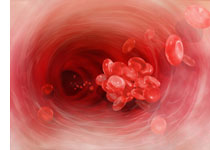Chronic inflammation is driven by a number of factors, most notably a diet filled with the wrong types of fats and sugars and its flip side, a diet devoid of healthy omega-3 fatty acids, dietary fiber, whole grains, and colorful fruits and vegetables. Throw in a chaser of psychological stress and physical exercise limited to changing the TV remote, and presto, you have an inflammatory assault on your skin.
Time magazine sometimes places a villain on its cover, and on February 23, 2004, that dishonor fell to chronic inflammation. Indeed, chronic inflammation earned its place in infamy because of its undeniable link to modern diseases such as heart disease, cancer, diabetes, and neutodegenerative diseases of the brain. Skin conditions are not immune to the ravages of inflammation. It is at the root of acne, psoriasis, and virtually all skin conditions in between. Inflammation also is at the root of skin aging, an inflammatory process that can be set in motion by both consistently poor dietary choices and chronic psychological stress. This is not the overt inflammation that plagues “-itis” conditions such as rheumatoid arthritis. Skin-aging inflammation is an insidious and subtle low-grade inflammation that damages skin in much the same way that waves erode a coastline. Once set in motion, inflammation in the skin will further promote oxidative stress.
Oxidative stress is a term that gets thrown around a lot these days. Let’s step back for a moment to get a handle on what oxidative stress is all about. Skin is out great defender, the unsung hero that protects us from all sorts of assaults. One of the most identifiable enemies to human skin is the free radical, an agent that, when kept unchecked, will produce oxidative stress.
 Free radicals are biological kleptomaniacs, and no amount of psycho-therapy is going to quell their desire to steal. In the case of skin aging, they are taking electrons. When free radicals steal electrons from other molecules, the result is damage to delicate skin components and further inflammation. Inflammation promotes oxidative stress, and oxidative stress promotes inflammation in an ongoing vicious cycle.
Free radicals are biological kleptomaniacs, and no amount of psycho-therapy is going to quell their desire to steal. In the case of skin aging, they are taking electrons. When free radicals steal electrons from other molecules, the result is damage to delicate skin components and further inflammation. Inflammation promotes oxidative stress, and oxidative stress promotes inflammation in an ongoing vicious cycle.
Oxidative Stress: When oxygen is used to produce energy in the human body, one of the byproducts is the creation of highly reactive molecules called free radicals. They are highly reactive because each of them is an unpaired molecule looking for a partner. They can interact with and damage structural fats, proteins, and even delicate genetic components in a process called oxidative stress.
The generation of free radicals is never going to stop. And approximately 3 percent of oxygen used in the metabolic processes of our cells is converted to free radicals. So why bother to worry about skin aging? If we can’t stop free radical production, how can we slow down skin aging and inflammation? The good news is that human skin has a wonderfully organized Department of Defense. It is equipped with two major systems that are capable of providing top-notch protection against free-radical damage:
1. Catalase, superoxide dismutase, and glutathione peroxidase—enzymes that race to neutralize free radicals.
2. Non-enzymatic antioxidant defense which directly uses vitamins and other nutrients—items like vitamins C and E, zinc, glutathione, and the so-called phytochemicals from plant-based foods and herbs.
One major caveat is that this wonderful antioxidant defense system depends entirely upon diet. Dietary nutrients turn on the ignition and ultimately drive the antioxidant enzymes, and the second line of defense, the non-enzymatic antioxidant armour, is obviously obtained directly through our foods and beverages of choice. Inflammation also can be dialed up or turned down by what we eat and drink.
The other major caveat is that the antioxidant defense system loses its efficiency through the aging process, and there is also an increased propensity to produce inflammatory chemicals in the skin as we age. That doesn’t mean that the young are immune; however, it does mean that inappropriate dietary choices made by older adults, those who pull up often to the drive-through window of major fast-food chains, will have massive skin-compromising consequences.
